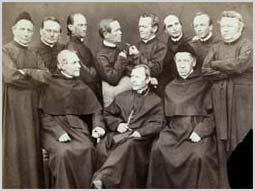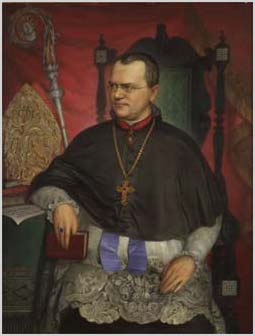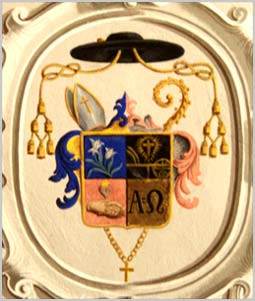The exhibition “Gregor Mendel” is based on “The Genius of Genetics, a celebration of Gregor Mendel (1822-1884) through science and art”. It aims to unravel the “little trick” and “long story” of Mendel’s discovery.An Augustinian friar, Gregor Johann Mendel lived and worked from 1843 in Brno, in the Augustian Abbey, of which he became the abbot in 1867. At the beginning of the 19th century, Brno, capital of the province of Moravia – then a region of the Austrian-Hungarian empire – was a culturally active, multi-lingual city. Mendel, who took part in the social and cultural life of the town, gained titles such as that first of Vice-President, and then President of the local Mortgage Bank, the Hypotheque Bank. He was especially known for his activity as a teacher, for his interest in meteorology and in the breeding of bees.Brno was also the centre of a major textile industry and the local economy was deeply rooted in agriculture, sheep-breeding (for wool production) and the cultivation of fruit trees and vines. The Augustian Abbey in Old Brno, like other religious institutions, received tithes from local farms. Abbot C. F. Napp, who preceded Mendel and took him on as a novice, had already established an experimental garden in the Abbey’s grounds in 1830. Napp – who supported Mendel in his full-time studies at Vienna University from 1851 to 1853 – was himself a plant breeder, president of the Pomological (apple-growing) Society, a member of the Sheep Breeders’ Association, and a firm believer in the value of experimental science. Under his leadership, rare Moravian plants were grown in the Abbey and a herbarium was founded.


Mendel’s own systematic experiments on pea plants were started in 1856 in the Abbey’s greenhouse. In 1865 Mendel presented his seminal paper on pea hybrids, Experiments in Plant Hybridization, and in 1866 this was published in the proceedings of the local Society for Natural Sciences. With Brno somewhat isolated from the main centres of the European scientific research network, Mendel’s article on pea hybrids went almost unnoticed. Yet, over fifty years later, the friar who experimented on pea hybrids was to be acclaimed as the father of classical genetics. The concepts he established in 1865 came to be known universally as Mendel’s laws of heredity, and the man himself came to be regarded as the “father of genetics”.This exhibition goes beyond the romantic myth of the cloistered monk undertaking incongruous experiments with peas; it explores “Mendel the man”, and what led to the formulation of his laws of heredity. Section one looks at Mendel’s background and the driving force behind his scientific endeavour; sections two and three at his research interests and the development of his method; finally section four looks at his experiments and discovery.


Alongside historical items, each section includes works by contemporary artists. These offer new and searching insights from vivid creative perspectives, bringing personal investigations to bear on the relationship between art and science. The contemporary artists in this exhibition share a fascination with the classification of nature, with the patterns observed in natural phenomena and in the animal kingdom, and with the scientific search for explanations of deep formal affinities across diverse physical and biological systems.As a key event in the public exposure of Mendel’s great achievement, this exhibition is the first step in a larger program to re-establish his home abbey as a center for genetics. Integral to the long term plan is the reconstruction of Mendel’s garden and the restoration of the original apiary where Mendel carried out his experiments on bees.
